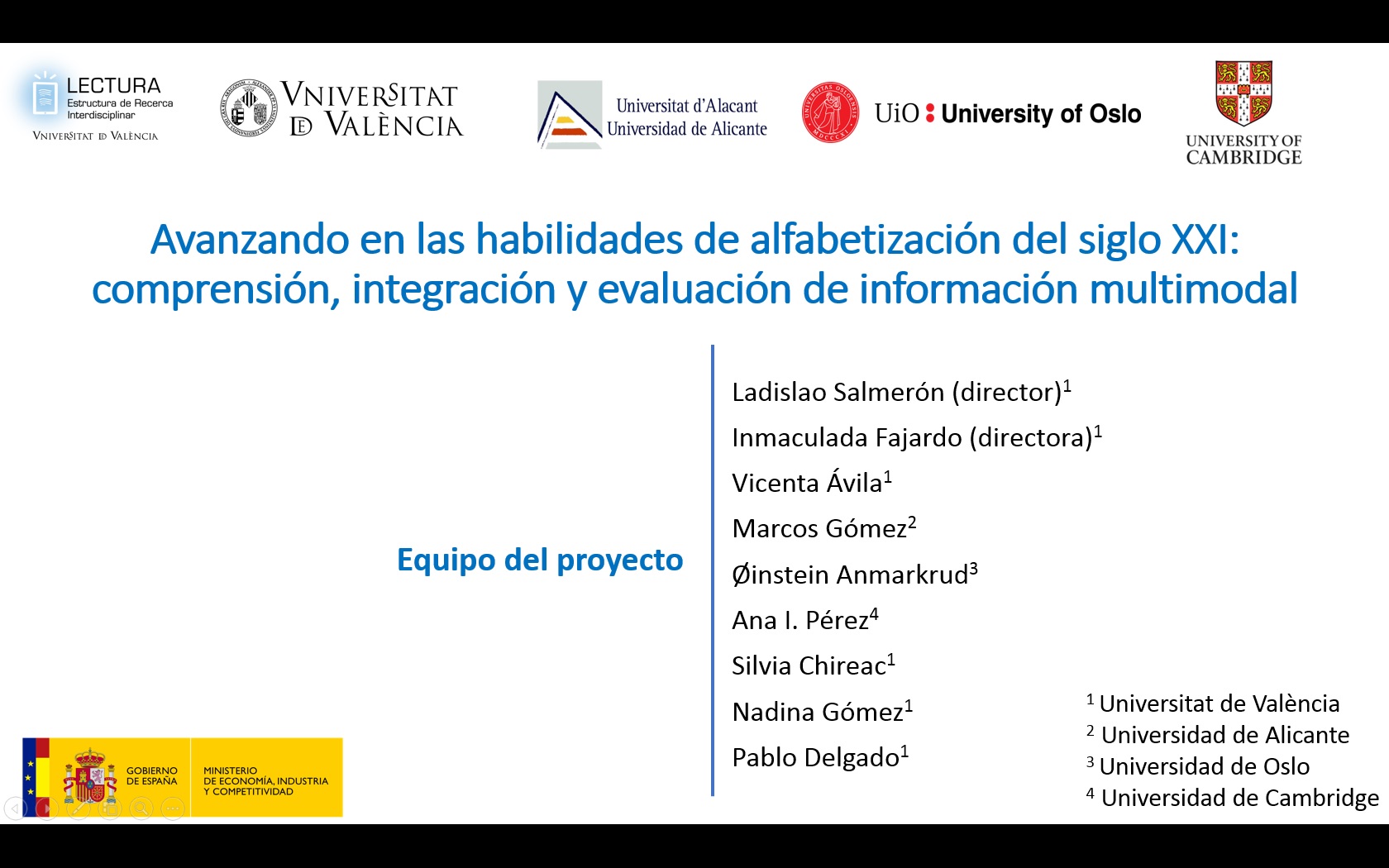The raise of the Internet and the expansion of digital devices is rapidly changing the nature of literacy in the XXI century. Digital literate students and citizens in general are not only expected to master traditional literacy skills such as reading printed texts, but also to be efficient in navigating hyperlinked documents (e.g. Web pages, Wikipedia), integrating information from diverse sources (e.g. a section in a textbook and an Internet video) and evaluating the quality of information (e.g. to trust or not a report in social media). Information sources are not just textual, as used to be in the past, but rather multimodal. This kind of multimodal reading and learning refers to the combined use of text, images and videos to build knowledge.
Multimodal reading imposes a series of new challenges at different processes of digital literacies: comprehension, integration and evaluation of information. But contrary to our knowledge on text comprehension, our understanding on multimodal comprehension is still preliminary. Accordingly, the main goal of the project is to understand students’ multimodal reading when using Internet videos for learning purposes, with the ultimate goal of designing and testing instructional techniques to foster students’ digital literacies. A series of studies have been planned to uncover the different processes linked to strategic reading of Internet videos, as well as their critical integration with other information modalities.
To do so, the project will make intensive use of eye-tracking, a technique that allows to uncover students’ processes as they are employed during comprehension and learning. We will focus on students at the final years of Primary education, as well as those in Secondary education in the Spanish system (ages 10 to 14), as they start using the Internet at schools for learning purposes. We will consider both normative students and those with text comprehension difficulties, as they may particularly benefit from actively and critically process verbal information from the videos.
Ladislao Salmerón (UV) Inmaculada Fajardo (UV)
Vicenta Ávila (UV)
Marcos Gómez (Universitat d'Alacant)
Øinstein Anmarkrud (University of Oslo, Norway)
Ana I. Pérez (University of Cambridge, UK)
Silvia Chireac (UV)
Nadina Gómez (UV)
Pablo Delgado (UV)
Ministerio de Economía y de Competitividad











